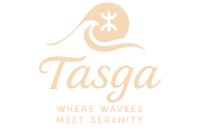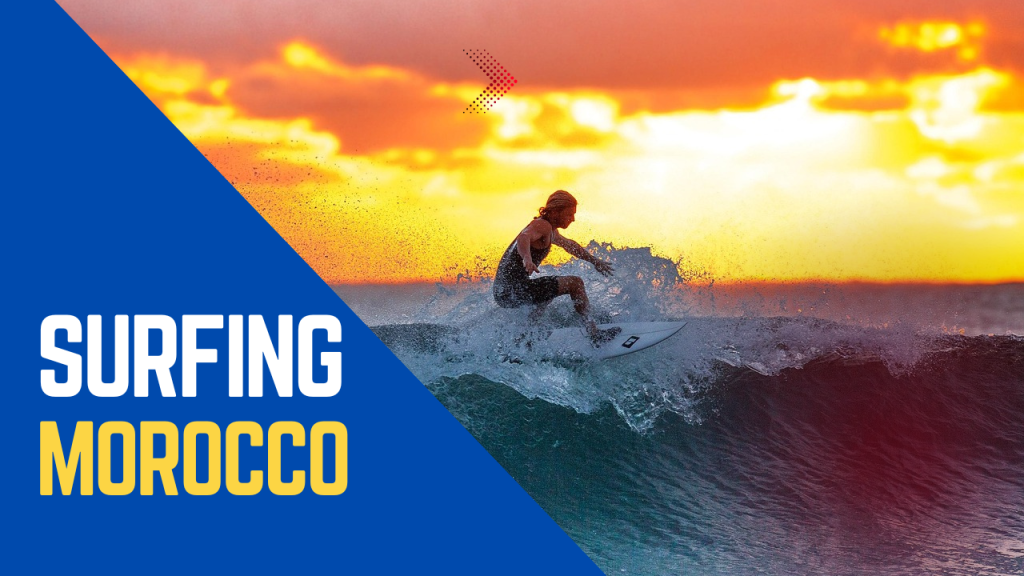Morocco, with its dramatic coastline stretching along the North Atlantic, has emerged as a premier surfing destination, captivating surfers from around the globe. From the consistent swells of its northern reaches to the more relaxed vibes of its southern shores, Morocco offers an unparalleled diversity of waves, a rich cultural tapestry, and a warm, welcoming atmosphere. It’s a place where ancient traditions meet modern surf culture, creating a unique and unforgettable experience for wave riders of all levels.
The Atlantic’s Generous Gift: Morocco’s Coastline
Morocco’s geographic position is its greatest asset for surfing. Situated at the northwestern tip of Africa, it’s perfectly exposed to the powerful winter swells generated in the North Atlantic. These swells travel across the ocean, gathering energy before colliding with Morocco’s varied coastline, producing a wide array of breaks – from long, peeling point breaks to hollow beach breaks and powerful reef breaks.
The dominant wind patterns, often offshore or light, contribute to clean, glassy conditions, particularly during the prime surf season. This consistent swell and favorable wind combination ensures that there’s almost always a wave to ride somewhere along the coast.
Key Surfing Regions and Their Iconic Breaks
Morocco’s surf scene is largely concentrated in a few key regions, each with its distinct character and collection of world-class waves.
1. The Agadir-Taghazout-Tamraght Hub: The Heart of Moroccan Surfing
This region, stretching just north of Agadir, is undoubtedly the epicenter of Moroccan surf culture. It’s the most developed and popular area, offering a vast array of waves suitable for all levels, along with abundant surf camps, schools, and amenities.
- Agadir: While the city’s main beach is perfect for beginners with its long, gentle sand-bottom waves, the real magic lies just north. Agadir serves as a convenient gateway for exploring the more renowned spots.
Further read : Tourism in Agadir, The Miami of Morocco
- Taghazout: This charming fishing village is the undisputed king of Moroccan surf. It gained international fame for its incredible point breaks, which come alive during the winter months.
- Anchor Point (Ankerson): The crown jewel. A world-class right-hand point break that can deliver incredibly long, powerful, and sometimes hollow rides on a good swell. It’s suitable for experienced surfers and can hold considerable size.
- Killer Point: Another classic, known for its long, consistent rights and the occasional barrel section. It requires a bit more paddle power but rewards with exhilarating rides.
- Mystery: A powerful and challenging reef break that comes to life on bigger swells, offering fast, hollow sections. For advanced surfers only.
- La Source: A series of reef breaks with both left and right-hand waves, often less crowded than Anchor Point and offering fun, playful rides.
- Hash Point: A user-friendly, mellow right-hand point break that’s great for intermediates and longboarders on smaller days.
- Tamraght: Located just south of Taghazout, Tamraght offers a slightly more relaxed vibe and a great selection of waves, particularly good for intermediates and improving surfers.
- Devil’s Rock: A popular beach break with both left and right waves that work on various tides and swell sizes, often suitable for all levels.
- Banana Point: A consistent right-hand point break that can offer long rides, particularly good for intermediates and longboarders. On bigger swells, it can be a challenging wave.
- Crocodile Beach: Another versatile beach break offering a mix of lefts and rights, often good for learning and progression.
- Imsouane: Further north of Taghazout, this picturesque fishing village is famous for having one of the longest right-hand waves in Africa, often called “The Bay.”
- The Bay (Imsouane Bay): An incredibly long, mellow right-hand point break that peels for hundreds of meters. It’s a longboarder’s paradise and perfect for beginners to intermediates looking for exceptionally long rides.
- Cathedral Point: A more powerful, faster right-hand point break that works on bigger swells, offering more challenging rides for experienced surfers.
2. Essaouira and Safi: Wind and Power
Further north along the coast, other significant surf spots emerge, each with its own characteristics.
- Essaouira: Known as the “Windy City of Africa,” Essaouira is a world-renowned destination for kitesurfing and windsurfing due to its consistent strong winds. While surfing is possible, particularly in sheltered spots or on days with lighter winds, it’s generally better suited for board sports that thrive on wind. The main beach is a good spot for beginners on smaller swells.
- Safi: Home to the legendary “Safi Right,” one of the most powerful and demanding right-hand point breaks in the world. This wave is for highly advanced and professional surfers only, as it’s incredibly fast, hollow, and breaks over a shallow reef. It requires specific swell direction and size to work.
3. Sidi Ifni and the South: Remote and Uncrowded
Venturing south of Agadir, the coastline becomes wilder, more remote, and generally less crowded, offering a different kind of surf experience.
- Sidi Ifni: A charming, laid-back town with some decent beach breaks that can offer fun, uncrowded waves. It’s a good base for exploring other lesser-known spots in the region.
- Legzira Beach: Famous for its natural arch formations (though some have collapsed), Legzira also offers good beach breaks, especially on smaller swells, and is a stunning backdrop for a surf session.
- Dakhla (further south in Western Sahara): While a significant distance from the main Moroccan surf hubs, Dakhla is a world-class kitesurfing and windsurfing destination, with consistent strong winds and flat-water lagoons. It also has some surf breaks, but it’s primarily known for wind sports.
When to Surf Morocco: Seasons and Swells

Morocco’s surf season is remarkably consistent, with waves available year-round, though the quality and size vary.
- Peak Season (September to April): This is the prime time for experienced surfers. The North Atlantic pumps out large, consistent swells, activating the powerful point breaks and reef breaks. The water is cooler, requiring a 3/2mm or 4/3mm wetsuit. Winds are generally favorable (offshore or light). This period also sees the most crowds.
- Shoulder Season (May and Early June): A fantastic time for intermediates and those looking to progress. Swells are still consistent but generally smaller and less powerful than the peak winter months. Crowds start to thin out, and water temperatures begin to rise.
- Summer (Late June to August): Characterized by smaller, more mellow swells. This is the ideal time for beginners to learn and for longboarders to enjoy the gentler waves. The water is warm, often allowing for boardshorts or shorty wetsuits. While the big point breaks might be dormant, the beach breaks offer plenty of fun.
Learning to Surf in Morocco: An Ideal Classroom
Morocco is an exceptional destination for learning to surf or improving your skills. The combination of beginner-friendly waves, numerous surf schools, and a supportive atmosphere makes it an ideal “classroom.”
- Gentle Beach Breaks: Spots like Agadir’s main beach, Banana Point (on smaller days), Devil’s Rock, and Imsouane’s Bay offer long, rolling waves over sand or soft reef, providing perfect conditions for catching your first white water rides or learning to paddle out.
- Abundance of Surf Schools and Camps: The coast, particularly around Taghazout and Tamraght, is dotted with highly reputable surf schools and camps. These offer:
- Qualified Instructors: Many are internationally certified, providing expert guidance on technique, ocean safety, and surf etiquette.
- Tailored Programs: Lessons are designed for all levels, from absolute beginners to advanced coaching, with options for group or private instruction.
- Equipment Rental: High-quality surfboards (soft tops for beginners, hardboards for intermediates/advanced) and wetsuits are readily available for rent.
- All-Inclusive Packages: Many surf camps offer packages that include accommodation, meals (often delicious Moroccan cuisine), daily surf lessons, transfers to surf spots, and sometimes even yoga sessions or cultural excursions.
- Rapid Progression: The consistent waves and dedicated instruction often lead to quick progression, allowing beginners to stand up and ride waves independently within a few days.
Moroccan Surf Culture and Beyond
Beyond the waves, Morocco offers a rich tapestry of cultural experiences that blend seamlessly with the surf lifestyle.
- Warm Hospitality (Berber Culture): The local people, particularly the Berber communities, are renowned for their warmth, friendliness, and hospitality. You’ll often find yourself sharing tea, stories, and meals with locals, immersing yourself in their way of life.
- Delicious Cuisine: Moroccan food is a highlight of any trip. Fuel your surf sessions with wholesome, flavorful dishes like tagines (slow-cooked stews), couscous, fresh seafood, and mint tea.
- Vibrant Souks and Markets: Explore the bustling local markets (souks) in towns like Agadir, Essaouira, or even smaller village markets. Here you can haggle for spices, argan oil, leather goods, textiles, and traditional crafts.
- Relaxed Pace of Life (Inshallah): Life in Moroccan surf towns moves at a more relaxed pace. The concept of “Inshallah” (God willing) permeates daily life, encouraging a flexible and easygoing approach, which perfectly complements the surf mentality.
- Cultural Excursions: When you’re not surfing, explore the region’s natural beauty and historical sites. Visit Paradise Valley, a stunning oasis with natural pools, or explore the ancient Kasbahs (fortresses) that dot the landscape.
- Community and Camaraderie: The surf community in Morocco is vibrant and welcoming. You’ll easily connect with fellow surfers from around the world, sharing waves, stories, and experiences.
Essential Tips for Surfing in Morocco
- Respect Local Customs: Morocco is a Muslim country. Dress modestly away from the beach, especially in towns and villages. Be mindful of local traditions and customs.
- Bargaining: Haggling is common in markets.
- Sun Protection: The sun can be intense. Use high-SPF sunscreen, wear a hat, and consider a rash guard.
- Stay Hydrated: Drink plenty of bottled water.
- Footwear: Reef booties are recommended for some rocky or reef breaks.
- Insurance: Travel insurance that covers surfing is advisable.
- Transportation: Renting a car offers the most flexibility to explore different surf spots, but taxis and shared grand taxis are also common. Many surf camps offer transport to the breaks.
- Surf Etiquette: Understand and practice basic surf etiquette to ensure a safe and enjoyable experience for everyone in the water.
Related article : Why Morocco should be your next destination as a tourist
Conclusion
Morocco truly stands as a world-class surf destination, offering an extraordinary blend of consistent waves, diverse breaks, and an incredibly rich cultural experience. From the legendary point breaks of Taghazout to the gentle rollers of Imsouane’s Bay, there’s a wave for every surfer, regardless of skill level. The warmth of Moroccan hospitality, the allure of its vibrant culture, and the consistent generosity of the Atlantic Ocean create a truly immersive and unforgettable surf adventure. More than just a surf trip, a journey to Morocco is an opportunity to connect with the ocean, embrace a new culture, and create lasting memories on the sun-drenched shores of North Africa.
Ready to your next trip to Morocco ? Contact us to reserve your seat


Pingback: Why Morocco should be your next destination as a tourist - Tasga
Pingback: Tourism in Agadir, The Miami of Morocco - Tasga